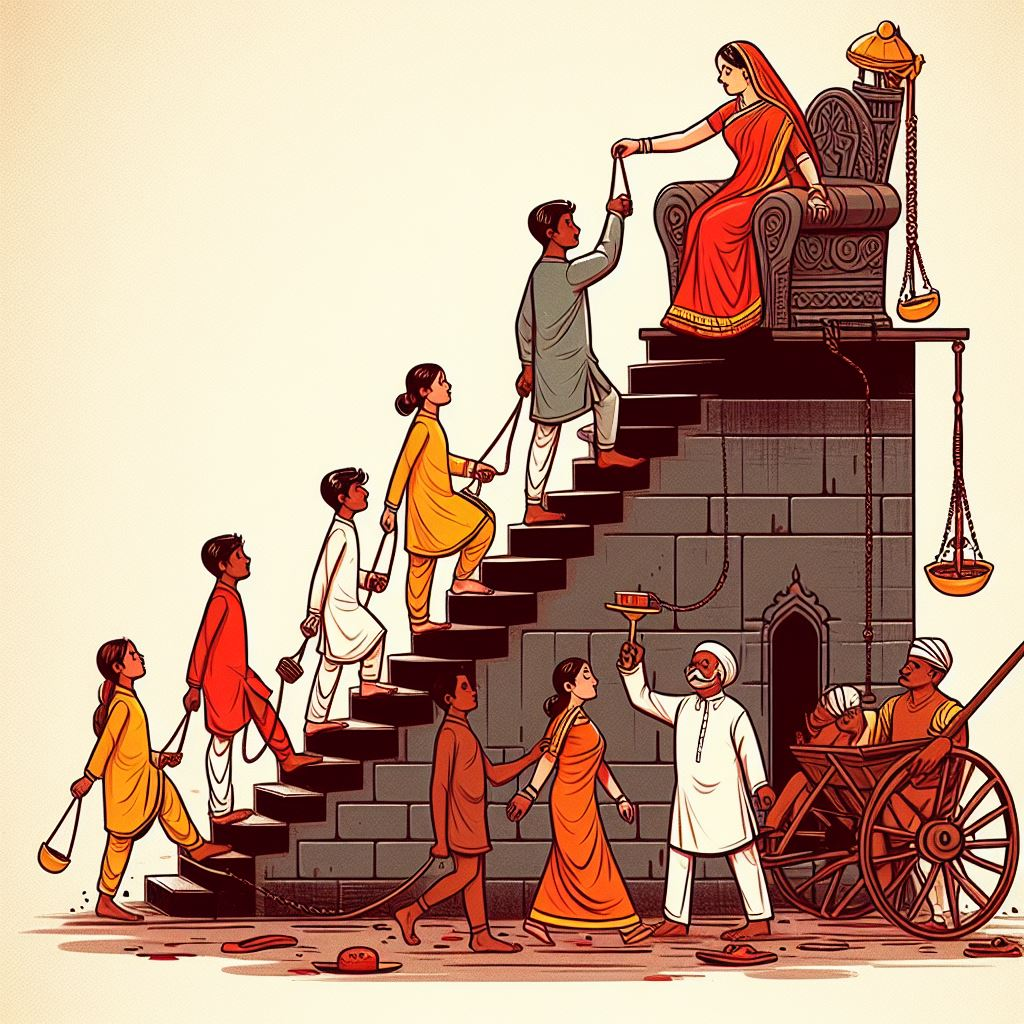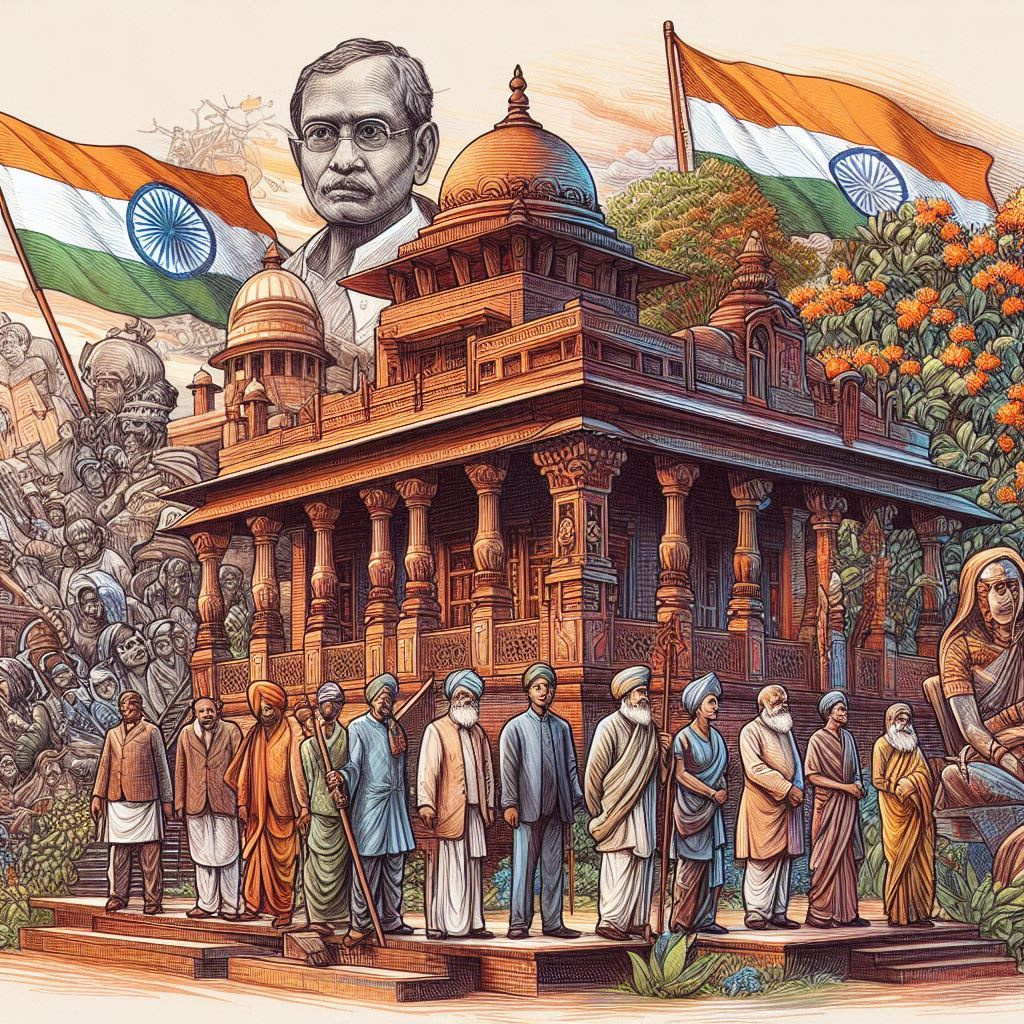Sheetal Pouria
‘Caste’ is the key category in the Indian social system and thinking. For ages, Caste has invariably been viewed as a distinctive feature of Indian society. It is not merely an institution that characterizes the structure of social stratification in India, but ‘Caste’ has often seen to represent the ‘Core of India’.
A general perception about caste system is that, in Urban India it has started walking away from the rigidity resulting in co-mingling of different caste communities, mainly due to higher education, globalization, and economic growth. In contrast to it, in rural areas, there is still discrimination based on castes and sometimes also on untouchability.

A Maharashtrian Poet, Karma Mela, a Mahar Dalit articulated his angst against caste in even stronger words:
You made us impure
I don’t know why Lord
We’ve eaten leftovers all our life
Doesn’t that trouble you
Our house stocked with rice and yogurt
How do you refuse it
Chokha’s Karma Mela asks
Why did you give me birth?
The term ‘Caste’ is derived from the Spanish and Portuguese word ‘Casta’ which means ‘Race, lineage or breed’. The Portuguese were the first Europeans to encounter the caste system in India.
The exact origin of Caste System in India emerged during Vedic Period [1500-500 BCE]. The earliest mention of Caste System can be found in sacred Hindu text i.e.Rigveda. The Rigveda describes a four tier social hierarchy with Brahmins [Priests] at the top, followed by Kshatriyas [Warriors], Vaishyas [Merchants] and Shudras [Labourers]. There is also a category of Untouchables or Dalits which remains aloof from the Four-Fold Varna System.
Dr.B.R.Ambedkar viewed “Caste as a System of Oppression and exploitation”.
Louis Dumont viewed “Caste as a Hierarchal and Rigid Social Ladder based on Purity and Pollution . He defined Caste as ‘Homo Hierarchicus”.
Pt.JawaharLal Nehru, India’s first Prime Minister and a Representative Modern Indian, described Caste System as “wholly incompatible, reactionary, restrictive and barriers to progress”.
Guru Nanak Dev Ji clearly speaks:
If idea of impurity be admitted, there is impurity in everything.
[SGGS page 472]
There are worms in cow-dung and in wood;
There is no grain of corn without Life,
In the first place, there is life in water
By which everything is made green.
How can impurity be avoided?
It enters our very kitchens.
Impurity is not washed away thus, O Nanak;
It is washed by divine knowledge….
All impurity supposedly contagious
Consists in superstition..
Those who have, through the Guru, understood
Suffer no contamination.”
IS ‘CASTE’ STILL PREVAILING IN INDIAN SOCIETY?
An important implication of the gradual process of economic development and social change has led the disintegration of traditional system of caste-based hierarchies and weakening of the ideological apparatus supporting the caste system. However, notwithstanding all these changes, the inequalities have persisted.
Thus, even though the older forms of untouchability have receded, atrocities committed on Dalits by the other dominant castes have still persisted. As we can see the overhyped case of Dalit Discrimination going on in the ‘Capital City of India’, where Dr. Ritu Singh, who was a Dalit Assistant Professor at Delhi University’s Daulat Ram College, was terminated from her position arbitrarily in 2020. Since then, Singh has been raising her voice against caste-based discrimination and harassment by the College Principal Dr. Savita Roy.
In India, despite the changes though, Caste identities remain strong and last names are almost always indications of what caste a person belongs to. ‘Violence based on Caste’ has also erupted in recent times, much of it involving attacks on Dalits. Highlighting, the chilling incident from UP, an 18 years old youth was killed in Sultanpur on august 25, 2023, allegedly for a simple demand of Rs.1200 of unpaid wages for four days of labour at farm in Baramadpur village.
Therefore, the existing persistence of Caste Injustices leads to the Unseen Division of Country in which the political parties also utilising the same kind of Caste Calculus to fulfil their interests. The famous Saint Poet ‘Kabir’, explicated about this in one of his verse:-
Pandit, look in your heart for knowledge
Tell me where Untouchability
Came from, since you believe in it.
We eat by touching,
We wash by touching, from a touch
This World was born.
So who’s Untouched? Asks Kabir
Only He
Who has no taint of Maya
And
It’s all one Skin and Bone
One piss and shit
One Blood, one meat
From one drop, a universe.
Who’s Brahmin? Who’s Shudra?
So, it can be said that the form and content of the caste system have changed, but it has not disappeared completely. It is still a significant factor for identity formation of the individuals as well as discrimination on the basis of caste. Though there is a significant decrease in the caste-based violence, we can still see some cases of violence too. Thus, the caste system cannot be changed by the formation of laws and policies from above. It can be changed only when the people in the lower rungs of the caste system will be able to properly assert themselves in the social, political, and economic spheres of the society.
The views and opinions expressed by the author/s in this article are their personal opinions and do not represent the views of PureSociology. The details of the author/s are:
Ms. Sheetal Pouria is pursuing MA in Sociology from University of Jammu.
REFERENCES:-
- Jodhka, S. S. (2015). Caste in contemporary India. Routledge India.
- Ahmad, Z. (2011). Caste systems in modern India. Author’s Press.
- Borooah, V. K., Sabharwal, N. S., Diwakar, D. G., Mishra, V. K., & Naik, A. K. (Eds.). (2015). Caste, discrimination, and exclusion in modern India. SAGE Publications.
Links:



Very good
I really like the content and the topic revisiting caste in contemporary India and I do believe that today also in this modern era people still discriminate not by their intelligence but by their caste . I do believe you should add some more incidents that is based on real fact nowadays . Well done keep it up 👍
Your Words have the power to change the world ❤️🔥❤️🔥
There is only one caste and that is humanity. ⭐
You are soooooo brave as like as ur words 🔥🔥
Very relevant commentary on caste
Very helpful for understanding caste system and in lucid language .
I’m grateful to everybody for their kind words🤍